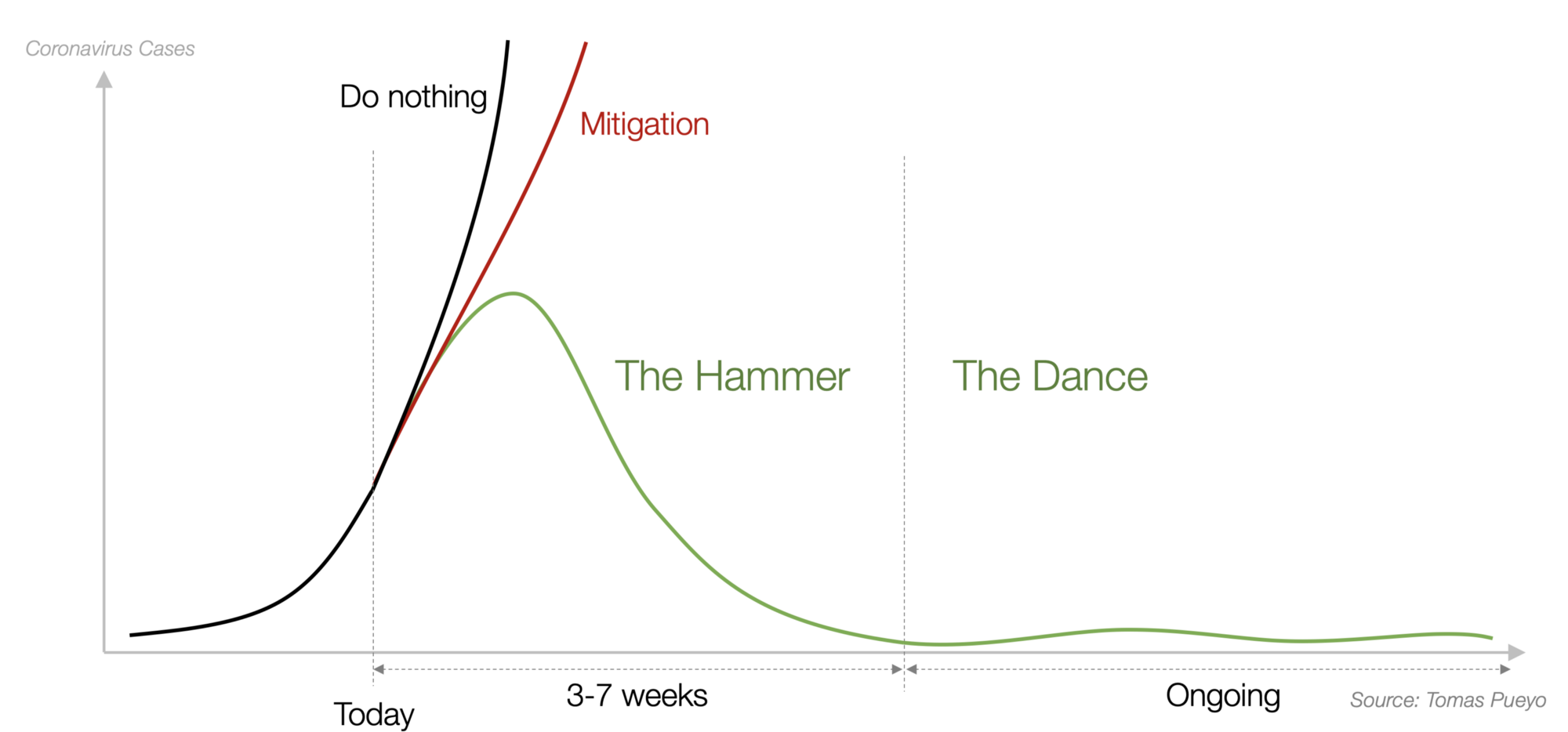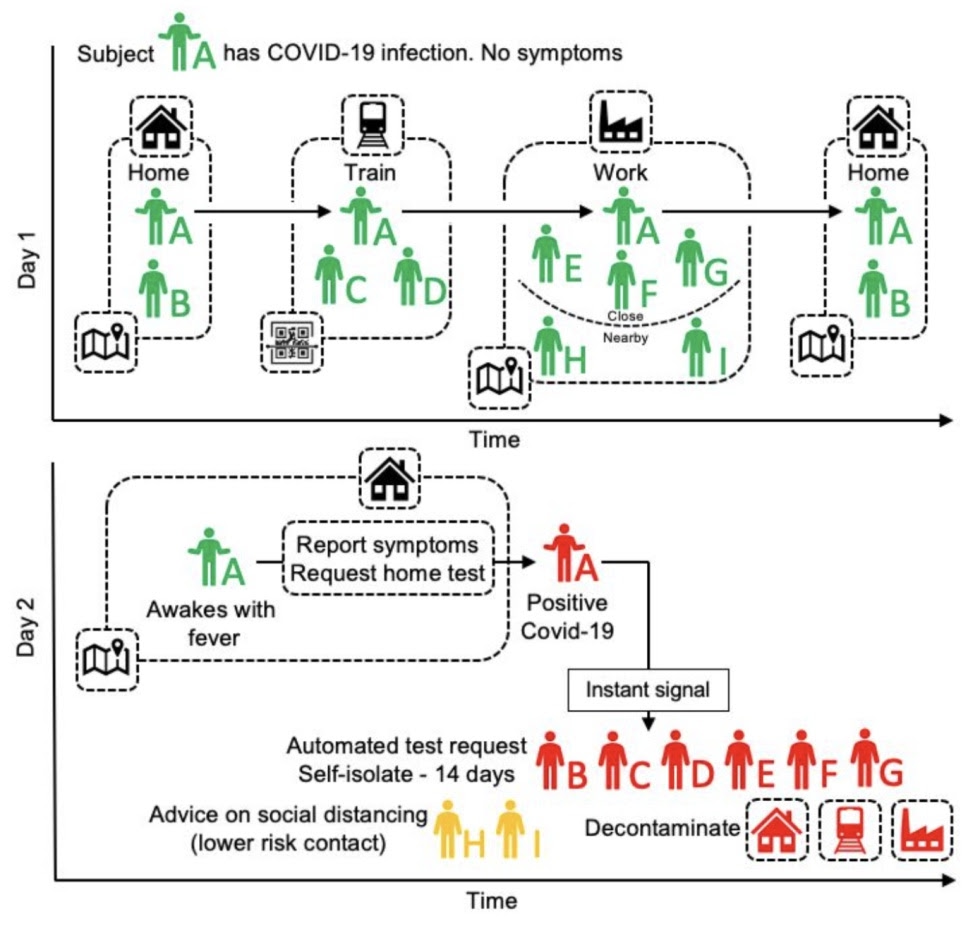The Monthly BriefingAt home 🏡 April 9th, 2020 |

Social distancing is the new normality. Although for some it does not imply a substantial change, for the majority it represents living in a totally different context. In the era of technological and Health advances, social distancing appears as the best solution to stop the spread of the virus and its consequences. 
Some countries have launched interesting data applications and analysis projects that have produced new insights to improve this crisis management, in some cases based on statistical data, but in many other cases making use of personal data, especially in Asia. From Europe and America these applications raise concerns, but at the same they have demonstrated to be effective to improve the situation and retake normality. Privacy legal framework and ethical use of data limits the development of this type of initiatives, but it also offers a wide range of guarantees to citizens. Should there be a trade-off between privacy and the use of personal data in extraordinary situations? The debate is on the table and has many edges, but working with data can help us as a society to face these hard moments from different approaches. In this Covid 19 Special Edition we talk about all of these issues. Use #datacovid19 to find out more related information and for contributions! |
|---|
|
People are staying home Michiel Bakker, Alex Berke, Matt Groh, Alex 'Sandy' Pentland, and Esteban Moro of the MIT IDSS and MIT Media Lab have analyzed mobility data in the New York City metropolitan area. Among the main conclusions they highlight the drastic reduction in the distances travelled or the decrease by 93% of social contact in places during a period of only three weeks. Currently, more than 60% of the population is staying home for the duration of the day, compared to 20% previously.
In Spain, this phenomenon is being even more accentuated. According to the Citymapper Mobility Index, public transport travel over the past week in the metropolitan areas of Madrid and Barcelona represent only 3%-4% of the pre- quarantine statistics. Furthermore, Google has analysed the decline in visits to places such as parks, shops, public transport networks or to the workplace. However, the decrease varies depending on the area. According to an analysis by the New York Times, "many lower-income workers continue to move around, while those who make more money are staying home". |
|
The hammer and the dance 
A good summary by Tomas Pueyo highlights the behaviour of the virus, the different containment efforts implemented -and their consequences- and the phases of this crisis. Main findings: the value of time, the problem of testing and tracing, the cost-benefit decisions. And the 'dance'. Or, in other words: how we will live in a constant dance with the virus, until a definitive treatment appears. We have more and more information about the virus and can make somewhat more accurate predictions. However, we still lack many certainties and reliable data in order to arrive at high confidence prediction models. Maggie Koerth, Laura Bronner and Jasmine Mithani explain why it’s so freaking hard to make a good Covid19 model. We have to take into account that we are presently moving within a very uncertain environment, so it is essential to include this uncertainty in the models we build. |
|
Trade-off between privacy and use of personal data The figure below shows a similar scheme to the digital tracing system implemented in some Asian countries to combat the spread of the virus. This system requires some control over people, especially when governments start monitoring the location of infected people to see if they are homebound. 
In Spain, the AEPD (Data Protection Agency), published a press released and a report pointing out that "the emergency situation cannot result in a suspension of the fundamental right to the protection of personal data. However, data protection legislation cannot be used to impede or limit the effectiveness of measures taken by competent authorities, especially health authorities". The AEPD also explains that "regarding the possibility that all those citizens who have tested positive for the COVID-19 can be geolocated through their mobile phones numbers they have previously provided, so that their quarantine can be monitored, it is necessary to starting again from the broad powers that in exceptional situations the health authorities have". Although the use of geolocation data may be one way of containing the spread of the virus, it is not the only one. Miguel Rebollo, professor at the Universidad Politécnica de Valencia (UPV), teaches at the School of Computer Science and in the IARFID Master (Artificial Intelligence, Pattern Recognition, and Digital Image), and he has analyzed this topic from another approach: to estimate the risk of infection without sharing private health data, by using network consensus process. |
|
Resources & challenges
|

Quote of the month "Diversity is being invited to the party, inclusion is being asked to dance". Vernā Myers, Vice President of Netflix. Even from home, work continues and also our commitment to diversity and inclusion. In the science and technology sector we see an undeniable reality: there is still a shortage of women to balance the gender gap. However, we can start to change this reality if we consider this commitment as a policy decision. Here our two cents. |
|
WORKING AT AI FACTORY Well, not exactly. It's been exactly 30 days since we went to the office for the last time before confinement. But we are working at full capacity from home. More video calls, less breakfasts with colleagues. Virtual coffee. We are continuing with our usual work but, at the same time, we are working on projects related to the Covid19. At BBVA Data & Analytics, together with the rest of our colleagues at the AI Factory, we are convinced that working with data can help in this crisis. We must help our customers. But we can be useful and help the whole society and our company. |
|
You can enjoy much more content related to data science, innovation, new solutions of financial analytics and how we work in our website: bbvadata.com Let's talk about it. Join the conversation on Linkedin. |
|
© 2020 All rights reserved. BBVA Data & Analytics. Avenida de Manoteras, 44 28050. Madrid. |